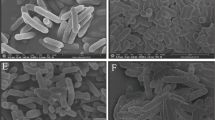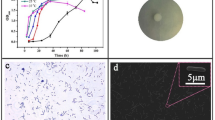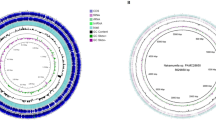Abstract
Tibetan Plateau is called ‘the Roof of the World’. Organisms survive there have to adapt to the high altitude environment. By shotgun method, we sequenced the genome of Bacillus aryabhattai T61, which inhabits in the soil at the altitude of 4123 m in Shigatse, Tibetan. Further, we explored the genomic basis for its adaptations to the plateau environment. The results showed that B. aryabhattai T61 has evolved an array of ROS defense systems and sporulation system for adaptations to the stresses caused by the plateau strong ultraviolet radiation, extreme oxygen limitation and low temperature. Specifically, B. aryabhattai T61 encodes the ResE–ResD two-component to sense the oxygen limitation and regulates COX15 for aerobic and anaerobic respiration. The two-component system DesK–DesR, which regulates the gene Des initiating the biosynthesis of unsaturated fatty acids, along with 33 temperature-shock proteins contribute to low temperature adaptation. With the comparative analysis, we deduced the novel gene cbiY may be involved in cobalamin biosynthesis. We also found that B. aryabhattai T61 may have novel regulatory mechanisms for sporulation initiation. B. aryabhattai T61 is the first Tibetan strain with high quality genome sequenced. The genome provides a paradigm for understanding the adaptations to the plateau environment in Bacteria kingdom.



Similar content being viewed by others
References
Aguilar PS, Hernandez-Arriaga AM, Cybulski LE, Erazo AC, de Mendoza D (2001) Molecular basis of thermosensing: a two-component signal transduction thermometer in Bacillus subtilis. EMBO J 20:1681–1691
Alcaraz LD, Moreno-Hagelsieb G, Eguiarte LE, Souza V, Herrera-Estrella L, Olmedo G (2010) Understanding the evolutionary relationships and major traits of Bacillus through comparative genomics. BMC Genom 11:332
Biedendieck R, Malten M, Barg H, Bunk B, Martens JH, Deery E, Leech H, Warren MJ, Jahn D (2010) Metabolic engineering of cobalamin (vitamin B12) production in Bacillus megaterium. Microb Biotechnol 3:24–37
Bigham AW, Wilson MJ, Julian CG, Kiyamu M, Vargas E, Leon-Velarde F, Rivera-Chira M, Rodriquez C, Browne VA, Parra E, Brutsaert TD, Moore LG, Shriver MD (2013) Andean and Tibetan patterns of adaptation to high altitude. Am J Hum Biol 25:190–197
Blin K, Medema MH, Kazempour D, Fischbach MA, Breitling R, Takano E, Weber T (2013) antiSMASH 2.0—a versatile platform for genome mining of secondary metabolite producers. Nucleic Acids Res 41:W204–W212
Bsat N, Herbig A, Casillas-Martinez L, Setlow P, Helmann JD (1998) Bacillus subtilis contains multiple Fur homologues: identification of the iron uptake (Fur) and peroxide regulon (PerR) repressors. Mol Microbiol 29:189–198
Budde I, Steil L, Scharf C, Völker U, Bremer E (2006) Adaptation of Bacillus subtilis to growth at low temperature: a combined transcriptomic and proteomic appraisal. Microbiology 152:831–853
de Hoon MJ, Eichenberger P, Vitkup D (2010) Hierarchical evolution of the bacterial sporulation network. Curr Biol 20:R735–R745
Delcher AL, Bratke K, Powers EC, Salzberg SL (2007) Identifying bacterial genes and endosymbiont DNA with Glimmer. Bioinformatics 23:673–679
Demple B, Ding H, Jorgensen M (2002) Escherichia coli SoxR protein: sensor/transducer of oxidative stress and nitric oxide. Methods Enzymol 348:355
Deng Y, Cui X, Hernández M, Dumont MG (2014) Microbial diversity in hummock and hollow soils of three wetlands on the Qinghai-Tibetan Plateau revealed by 16S rRNA pyrosequencing. PLoS ONE 9:e103115
Dosek A, Ohno H, Acs Z, Taylor AW, Radak Z (2007) High altitude and oxidative stress. Respir Physiol Neurobiol 158:128–131
Errington J (2003) Regulation of endospore formation in Bacillus subtilis. Nat Rev Microbiol 1:117–126
Feng W, Zhang L, Xuan H, Wan P, Li Y, Yang ZW (2016) Isolation and identification of radiation resistant Bacillus aryabhattai T61 from Tibetan soil. Microbiology China (In press)
Fuangthong M, Atichartpongkul S, Mongkolsuk S, Helmann JD (2001) OhrR is a repressor of ohrA, a key organic hydroperoxide resistance determinant in Bacillus subtilis. J Bacteriol 183:4134–4141
Galperin MY, Makarova KS, Wolf YI, Koonin EV (2015) Expanded microbial genome coverage and improved protein family annotation in the COG database. Nucleic Acids Res 43:D261–D269
Graumann P, Wendrich TM, Weber MH, Schröder K, Marahiel MA (1997) A family of cold shock proteins in Bacillus subtilis is essential for cellular growth and for efficient protein synthesis at optimal and low temperatures. Mol Microbiol 25:741–756
Jones P, Binns D, Chang HY, Fraser M, Li W, McAnulla C, McWilliam H, Maslen J, Mitchell A, Nuka G et al (2014) InterProScan 5: genome-scale protein function classification. Bioinformatics 30:1236–1240
Kanehisa M, Goto S, Kawashima S, Nakaya A (2002) The KEGG databases at GenomeNet. Nucleic Acid Res 30:42–46
Kunst F, Ogasawara N, Moszer I, Albertini AM, Alloni G, Azevedo V, Bertero MG, Bessières P, Bolotin A, Borchert S, Borriss R et al (1997) The complete genome sequence of the gram-positive bacterium Bacillus subtilis. Nature 390:249–256
Lagesen K, Hallin PF, Rodland E, Staerfeldt HH, Rognes T, Ussery DW (2007) RNammer: consistent annotation of rRNA genes in genomic sequences. Nucleic Acid Res 35:3100–3108
Li R, Li Y, Kristiansen K, Wang J (2008) SOAP: short oligonucleotide alignment program. Bioinformatics 24:713–714
Li R, Zhu H, Ruan J, Qian W, Fang X, Shi Z, Li Y, Li S, Shan G, Kristiansen K, Li S, Yang H, Wang J, Wang J (2010) De novo assembly of human genomes with massively parallel short read sequencing. Genome Res 20:265–272
Liu JD, Liu JM, Linderholm HW, Chen D, Yu Q, Wu D, Haginoya S (2012) Observation and calculation of the solar radiation on the Tibetan Plateau. Energy Conv Manag 57:23–32
Lorenzo FR, Huff C, Myllymäki M, Olenchock B, Swierczek S, Tashi T, Gordeuk V, Wuren T, Ri-Li G, McClain DA et al (2014) A genetic mechanism for Tibetan high-altitude adaptation. Nat Genet 46:951–956
Lowe TM, Eddy SR (1997) tRNAscan-SE: a program for improved detection of transfer RNA genes in genomic sequence. Nucleic Acid Res 25:955–964
Mansilla MC, Cybulski LE, Albanesi D, de Mendoza D (2004) Control of membrane lipid fluidity by molecular thermosensors. J Bacteriol 186:6681–6688
Möbius K, Arias-Cartin R, Breckau D, Hännig AL, Riedmann K, Biedendieck R, Schröder S, Becher D, Magalon A, Moser J et al (2010) Heme biosynthesis is coupled to electron transport chains for energy generation. Proc Natl Acad Sci USA 107:10436–10441
Mongkolsuk S, Helmann JD (2002) Regulation of inducible peroxide stress responses. Mol Microbiol 45:9–15
Nawrocki EP, Eddy SR (2013) Infernal 1.1: 100-fold faster RNA homology searches. Bioinformatics 29:2933–2935
Pacifici RE, Davies KJ (1991) Protein, lipid and DNA repair systems in oxidative stress: the free-radical theory of aging revisited. Gerontology 37:166–180
Paget MS, Buttner MJ (2003) Thiol-based regulatory switches. Annu Rev Genet 37:91–121
Panek H, O’Brian MR (2002) A whole genome view of prokaryotic haem biosynthesis. Microbiology 148:2273–2282
Petousi N, Robbins PA (2014) Human adaptation to the hypoxia of high altitude: the Tibetan paradigm from the pregenomic to the postgenomic era. J Appl Physiol 116:875–884
Phung TH, Jung HI, Park JH, Kim JG, Back K, Jung S (2011) Porphyrin biosynthesis control under water stress: sustained porphyrin status correlates with drought tolerance in transgenic rice. Plant Physiol 157:1746–1764
Ray S, Datta R, Bhadra P, Mitra B (2012) From space to Earth: Bacillus aryabhattai found in the Indian sub-continent. Biosci Discov 3:138–145
Ren B, Duan X, Ding H (2009) Redox control of the DNA damage-inducible protein DinG helicase activity via its iron-sulfur cluster. J Biol Chem 284:4829–4835
Robert CE (2004) MUSCLE: a multiple sequence alignment method with reduced time and space complexity. BMC Bioinformatics 5:113
Rodionov DA, Vitreschak AG, Mironov AA, Gelfand MS (2002) Comparative genomics of thiamin biosynthesis in procaryotes new genes and regulatory mechanisms. J Biol Chem 277:48949–48959
Scott AI, Roessner CA (2002) Biosynthesis of cobalamin (vitamin B (12)). Biochem Soc Trans 30:613–620
Sun G, Sharkova E, Chesnut R, Birkey S, Duggan MF, Sorokin A, Pujic P, Ehrlich SD, Hulett FM (1996) Regulators of aerobic and anaerobic respiration in Bacillus subtilis. J Bacteriol 178:1374–1385
Talavera G, Castresana J (2007) Improvement of phylogenies after removing divergent and ambiguously aligned blocks from protein sequence alignments. Syst Biol 56:564–577
Tamura K, Stecher G, Peterson D, Filipski A, Kumar S (2013) MEGA6: molecular evolutionary genetics analysis Version 6.0. Mol Biol Evol 30:2725–2729
Wang MS, Li Y, Peng MS, Zhong L, Wang ZJ, Li QY, Tu XL, Dong Y, Zhu CL, Wang L et al (2015) Genomic analyses reveal potential independent adaptation to high altitude in Tibetan chickens. Mol Biol Evol 32:1880–1889
Wilson K (2001) Preparation of genomic DNA from bacteria. Curr Protoc Mol Biol. Chap 2, Unit 2.4
Zhang X, Hulett FM (2000) ResD signal transduction regulator of aerobic respiration in Bacillus subtilis: ctaA promoter regulation. Mol Microbiol 37:1208–1219
Acknowledgments
This study was funded by the scientific research project of Beijing Municipal Commission of education, KM201510028010.
Author information
Authors and Affiliations
Corresponding authors
Ethics declarations
Conflict of interest
Authors declare no conflict of interest.
Electronic supplementary material
Below is the link to the electronic supplementary material.
Rights and permissions
About this article
Cite this article
Yan, Y., Zhang, L., Yu, M. et al. The genome of Bacillus aryabhattai T61 reveals its adaptation to Tibetan Plateau environment. Genes Genom 38, 293–301 (2016). https://doi.org/10.1007/s13258-015-0366-2
Received:
Accepted:
Published:
Issue Date:
DOI: https://doi.org/10.1007/s13258-015-0366-2




